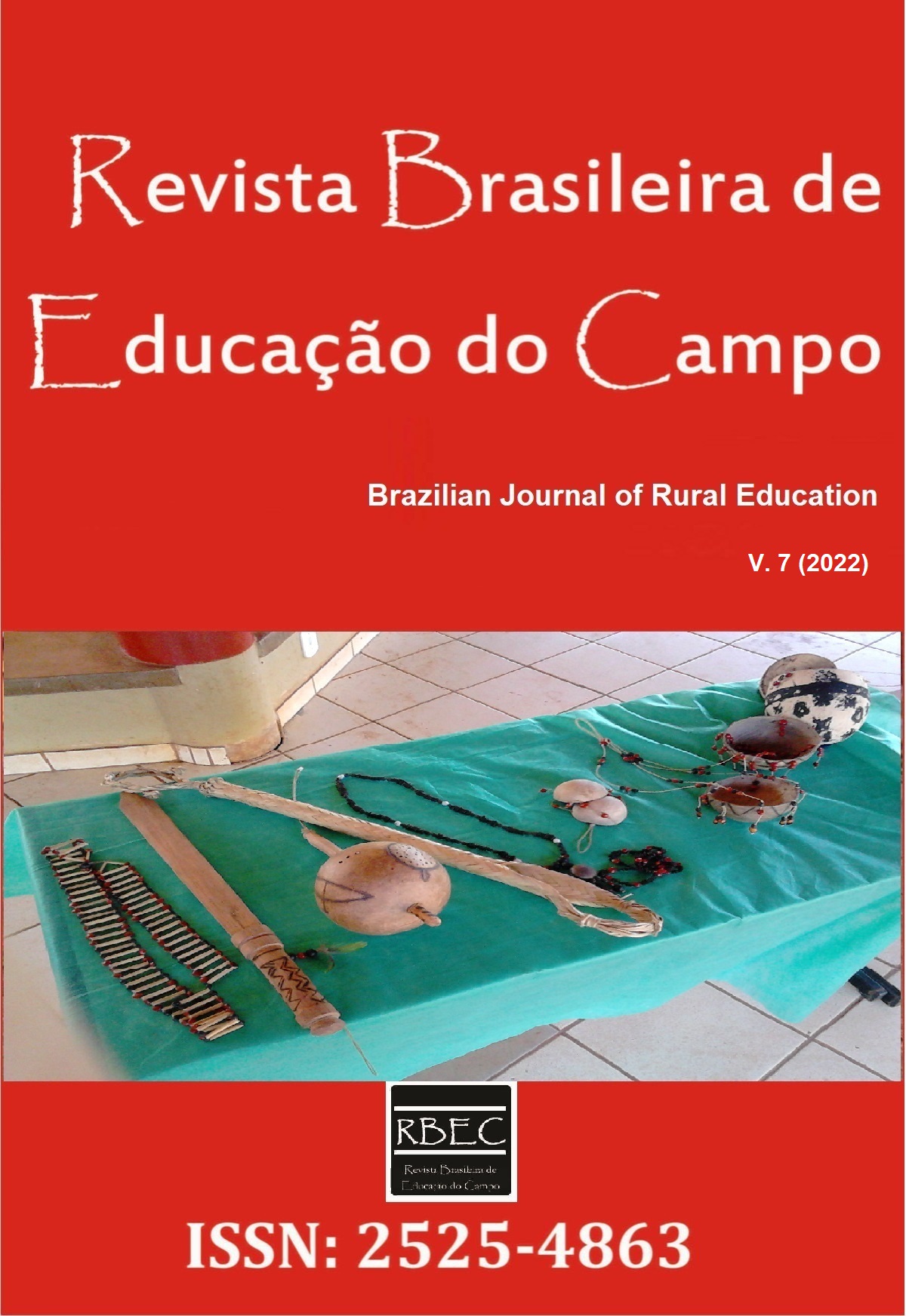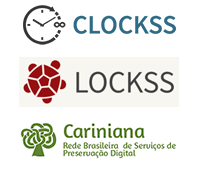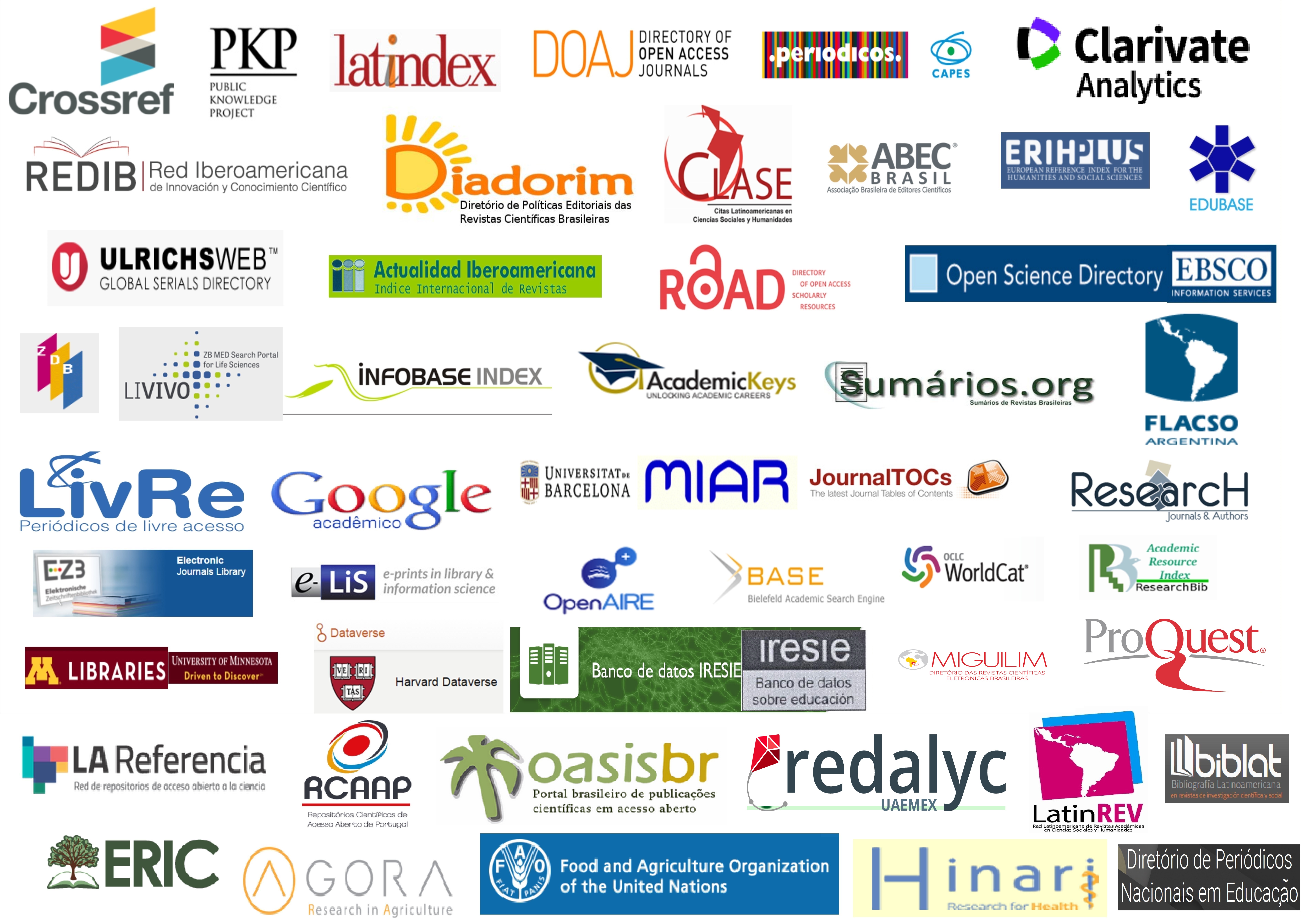Inclusive education in rural schools of Ukraine or how to ensure quality inclusive education in rural schools in Ukraine?
DOI:
https://doi.org/10.20873/uft.rbec.e13940Palavras-chave:
educación inclusiva; escuela rural; niños con necesidades especiales; diseño inclusivo; entorno educativo inclusivoResumo
Educação inclusiva nas escolas rurais da Ucrânia ou como assegurar uma educação inclusiva de qualidade nas escolas rurais da Ucrânia?
Objetivo do artigo: apresentar os problemas de implementação da inclusão na escola rural típica da Ucrânia com base em pesquisas empíricas focadas na identificação da atitude de professores de escolas rurais em relação à educação inclusiva, sua compreensão das dificuldades e prioridades para melhorar a qualidade do ensino destinado a alunos com necessidades educacionais especiais. Para atingir o objetivo da pesquisa, foram utilizados os seguintes métodos: estudo da literatura psicológica e pedagógica, questionários, análise quantitativa e qualitativa dos dados obtidos. O artigo contém a análise teórica do problema delineado e fundamentação das peculiaridades e dificuldades do ensino de alunos com necessidades educacionais especiais na localidade rural. Descrevemos os resultados de uma pesquisa com professores envolvidos no processo inclusivo em escolas rurais. O estudo empírico envolveu 192 pessoas representando diferentes categorias de idade e regiões da Ucrânia. O assunto do estudo são os aspectos da gestão eficaz na administração escolar rural, trabalho profissional da equipe de apoio psicológico e pedagógico de crianças com necessidades educacionais especiais, apoio ao processo inclusivo com tecnologias de informação e comunicação (TIC) e STEAM-laboratórios para aprendizagem, cooperação com a comunidade, criação de design educacional universal e outros. Determinamos as perspectivas para o desenvolvimento das escolas rurais com educação inclusiva em condições modernas de digitalização da educação.
Palavras-chave: educação inclusiva, escola rural, crianças com necessidades especiais, design inclusivo, ambiente educacional inclusivo.
Inclusive education in rural schools of Ukraine or how to ensure quality inclusive education in rural schools in Ukraine?
ABSTRACT. The aim of the paper is to reveal the challenges of implementation of inclusive education in typical rural schools of Ukraine. The authors performed empirical research to identify attitudes of rural school teachers towards inclusive education as well as their understanding of existing barriers and priorities to improve the quality of educational services for students with special educational needs (SEN). To achieve the aim of the research, the following methods have been used: reviewing of psychological and pedagogical literature, questionnaire surveys, quantitative and qualitative analysis of the obtained data. The outlined problem has been theoretically analyzed and the peculiarities and difficulties of teaching students with special educational needs in rural areas have been substantiated. The paper describes survey responses of teachers involved in the inclusive process in rural schools. 192 representatives of different age categories and regions of Ukraine participated in this empirical study. The paper explores questions of effective management of rural schools, professional cooperation in a team of psychological and pedagogical support of students with special educational needs, promotion of inclusive practices via information and communication technologies (ICT) and STEAM-laboratories, cooperation within local communities, introduction of universal design for learning and others. Prospects for the development of rural inclusive schools in current conditions of digitalization of education also have been identified.
Keywords: inclusive education, rural school, students with special educational needs, inclusive design, inclusive learning environment.
La educación inclusiva en las escuelas rurales de Ucrania o ¿cómo garantizar una educación inclusiva de calidad en las escuelas rurales de Ucrania?
RESUMEN. Propósito del artículo: presentar los problemas de implementación de la inclusión en la escuela rural típica en Ucrania con base en una investigación empírica centrada en identificar la actitud de los maestros de escuelas rurales hacia la educación inclusiva, su comprensión de las dificultades y prioridades para mejorar la calidad de la enseñanza diseñado para alumnos con necesidades educativas especiales. Para lograr el objetivo de la investigación se utilizaron los siguientes métodos: estudio de la literatura psicológica y pedagógica, cuestionarios, análisis cuantitativo y cualitativo de los datos obtenidos. El artículo contiene el análisis teórico del problema planteado y el razonamiento de las peculiaridades y dificultades de la enseñanza a alumnos con necesidades educativas especiales en el medio rural. Describimos los resultados de una encuesta con docentes involucrados en el proceso inclusivo en escuelas rurales. El estudio empírico involucró a 192 personas que representaban diferentes categorías de edad y regiones en Ucrania. Los temas de estudio son aspectos de gestión eficaz en la gestión escolar rural, trabajo profesional del equipo de apoyo psicológico y pedagógico de niños con necesidades educativas especiales, apoyo al proceso inclusivo con tecnologías de información y comunicación (TIC) y STEAM-laboratorios para el aprendizaje, cooperación comunitaria, creación de diseño educativo universal y otros. Determinamos las perspectivas para el desarrollo de escuelas rurales con educación inclusiva en condiciones modernas de digitalización de la educación.
Palabras clave: educación inclusiva, escuela rural, niños con necesidades especiales, diseño inclusivo, entorno educativo inclusivo.
Downloads
Referências
Adderley, R. J., Hope, M. A., Hughes, G. C., Jones, L., Messiou, K., & Shaw, P. A. (2015). Exploring inclusive practices in primary schools: focusing on children’s voices. European Journal of Special Needs Education, 30(1), 106-121. https://doi.org/10.1080/08856257.2014.964580
Adebisi, R. O., Liman, N. A., & Longpoe, P. K. (2015). Using assistive technology in teaching children with learning disabilities in the 21st century. Journal of Education and Practice, 6(24), 14-20.
Ainscow, M. (2005). Developing inclusive education systems: what are the levers for change? Journal of Educational Change, 6, 109–124. https://doi.org/10.1007/s10833-005-1298-4
Ainscow, M., Farrell, P., & Tweddle, D. (2000). Developing policies for inclusive education: A study of the role of local education authorities. International Journal of Inclusive Education, 4(3), 211–229. https://doi.org/10.1080/13603110050059150
Barley, Z. A., & Brigham, N. (2008). Preparing teachers to teach in rural schools (Issues & Answers Report, REL 2008–No. 045). Washington, DC: U.S. Department of Education, Institute of Education Sciences, National Center for Education Evaluation and Regional Assistance, Regional Educational Laboratory Central. Retrieved from http://ies.ed.gov/ncee/edlabs
Black, А. (2019). A Picture of Special Educational Needs in England – An Overview. Frontiers in Education, 06. https://doi.org/10.3389/feduc.2019.00079
Budnyk, O. (2018). Theoretical principles of using STEAM-technologies in the preparation of the teacher of the New Ukrainian school. Journal of Vasyl Stefanyk Precarpathian National University, 5(1), 23-30. https://doi.org/10.15330/jpnu.5.1.23-30
Budnyk, O., & Kotyk, M. (2020). Use of Information and Communication Technologies in the Inclusive Process of Educational Institutions. Journal of Vasyl Stefanyk Precarpathian National University, 7(1), 15-23. https://doi.org/10.15330/jpnu.7.1.15-23
Budnyk, O., Nikolaesku, I., Stepanova, N., Vovk, O., Palienko, A., & Atroshchenko, T. (2021). Organization of the educational process in the Rural School of the mountain region: a case study. Revista Brasileira De Educação Do Campo, 6, e12647. https://doi.org/10.20873/uft.rbec.e12647
Callado, J. A., Molina, Mª. D., Pérez, E., & Rodríguez, J. (2015). Inclusive education in schools in rural areas. New Approaches in Educational Research, 4(2), 107-114. https://doi.org/10.7821/naer.2015.4.120
CAST (2018). Universal Design for Learning Guidelines version 2.2. Retrieved from http://udlguidelines.cast.org
Druin, A., & Fast, C. (2002). The Child as Learner, Critic, Inventor, and Technology Design Partner: An Analysis of Three Years of Swedish Student Journals. International Journal of Technology and Design Education, 12(3), 189-213. https://doi.org/10.1023/A:1020255806645
Erdem, R. (2017). Students with Special Educational Needs and Assistive Technologies: A Literature Review Dr. TOJET: The Turkish Online Journal of Educational Technology, 16(1), 128-146.
Inclusive design: making our differences invisible. 2019. Retrieved from https://www.gsk.com/en-gb/behind-the-science/inclusive-design-making-our-differences-invisible/
Glover, T. A., Nugent, G. C., Chumney, F. L., Ihlo, T., Shapiro, E. S., Guard, K., & Bovaird, J. (2016). Investigating rural teachers’ professional development of instructional knowledge, and classroom practice. Journal of Research in Rural Education, 31(4), 1–16. https://files.eric.ed.gov/fulltext/EJ1101917.pdf
Harley, D., Vetere, F., Fitzpatrick, G., Kurniawan, S. (2012). Intergenerational context as an emphasis for design. Universal Access in the Information Society, 11(1), 1–5. https://doi.org/10.1007/s10209-011-0228-x
Main, S., Chambers, D. J., & Sarah, P. (2016). Supporting the transition to inclusive education: teachers’ attitudes to inclusion in the Seychelles. International Journal of Inclusive Education, 20(12), 1270-1285. https://doi.org/10.1080/13603116.2016.1168873
Malhoit, G. C. (2005). Providing Rural Students with a High Quality Education: The Rural Perspective on the Concept of Educational Adequacy. A Publication of the Rural School and Community Trust, The Rural School and Community Trust. Printed in the United States of America. https://www.ruraledu.org/user_uploads/file/Providing_Rural_Students.pdf
Nikolaesku, I., Budnyk, O., Bondar, V., Tepla, O., & Berezovska, L. (2021). Pedagogical Management in Inclusive Process of the Educational Institution. Amazonia Investiga, 10(39), 76-85. https://doi.org/10.34069/AI/2021.39.03.7
Nuñez, C. G., Peña, M., González, B., Ascorra, P., & Hain, A. (2021). Rural schools have always been inclusive: the meanings rural teachers construct about inclusion in Chile. International Journal of Inclusive Education. https://doi.org/10.1080/13603116.2021.1968521
Persson, H., Åhman, H., Yngling, A. A., et al. (2015). Universal design, inclusive design, accessible design, design for all: different concepts – one goal? On the concept of accessibility – historical, methodological and philosophical aspects. Universal Access in the Information Society, 14, 505–526. https://doi.org/10.1007/s10209-014-0358-z
Raywid, M. A. (1999). Current literature on small schools. ERIC/CRESS, EDO-RC-98-8. Appalachian Educational Laboratory. https://files.eric.ed.gov/fulltext/ED425049.pdf
Sanjeev, K., & Kumar, K. (2007). Inclusive Education in India. Electronic Journal for Inclusive Education, 2 (2). https://corescholar.libraries.wright.edu/cgi/viewcontent.cgi?article=1086&context=ejie
Simón, C., Palomo, R., & Echeita, G. (2021). The duty to promote an inclusive educational system: a phenomenological study on the assessment procedures of pupils with special educational needs in Madrid (Spain). International Journal of Inclusive Education. https://doi.org/10.1080/13603116.2021.1968513
TaxÉn, G., Druin, A., Fast, C., & Kjellin, M. (2001). KidStory: A technology design partnership with children. Behaviour & Information Technology, 20(2), 119-125. https://doi.org/10.1080/01449290010020701
Vasianovych H., Budnyk O., Klepar M., Beshok T., Blyznyuk T., & Latyshevska K. (2020). Pragmatism in Philosophy of Inclusive Education Studies and Problems of Teacher Training. Revista Inclusiones, 7(4), 59-73.
Villegas, T. (2021). The Biggest Barriers to Inclusive Education. https://www.thinkinclusive.us/post/barriers-to-inclusive-education
Zinger, D., Haymore Sandholtz, J., & Ringstaff, C. (2020). Teaching Science in Rural Elementary Schools: Affordances and Constraints in the age of NGSS. The Rural Educator, 41(2), 14-30. https://doi.org/10.35608/ruraled.v41i2.558
Downloads
Publicado
Como Citar
Edição
Seção
Licença
Proposta de Aviso de Direito Autoral Creative Commons
1. Proposta de Política para Periódicos de Acesso Livre
Autores que publicam nesta revista concordam com os seguintes termos:
a. Autores mantém os direitos autorais e concedem à revista o direito de primeira publicação, com o trabalho simultaneamente licenciado sob a Licença Creative Commons Attribution que permite o compartilhamento do trabalho com reconhecimento da autoria e publicação inicial nesta revista.
b. Autores têm autorização para assumir contratos adicionais separadamente, para distribuição não-exclusiva da versão do trabalho publicada nesta revista (ex.: publicar em repositório institucional ou como capítulo de livro), com reconhecimento de autoria e publicação inicial nesta revista.
c. Autores têm permissão e são estimulados a publicar e distribuir seu trabalho online (ex.: em repositórios institucionais ou na sua página pessoal) a qualquer ponto antes ou durante o processo editorial, já que isso pode gerar alterações produtivas, bem como aumentar o impacto e a citação do trabalho publicado (Veja O Efeito do Acesso Livre).
Proposal for Copyright Notice Creative Commons
1. Policy Proposal to Open Access Journals
Authors who publish with this journal agree to the following terms:
A. Authors retain copyright and grant the journal right of first publication with the work simultaneously licensed under the Creative Commons Attribution License that allows sharing the work with recognition of its initial publication in this journal.
B. Authors are able to take on additional contracts separately, non-exclusive distribution of the version of the paper published in this journal (ex .: publish in institutional repository or as a book), with an acknowledgment of its initial publication in this journal.
C. Authors are permitted and encouraged to post their work online (eg .: in institutional repositories or on their website) at any point before or during the editorial process, as it can lead to productive exchanges, as well as increase the impact and the citation of published work (See the Effect of Open Access).














